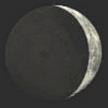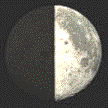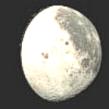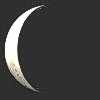Controverscial.Com
![]()
Welcome
![]()
|
Controverscial.Com
Welcome
|
|
|
Controverscial.Com
Welcome
|
![]()



Written and compiled by George Knowles
![]()
Whenever
ye have need of anything
once
in the month and better it be when the moon is full,
then
shall ye assemble in some secret place
and
adore the spirit of me,
who
am Queen of all witches.
There
shall ye assemble
ye
who are fain to learn all sorcery
yet
have not won its deepest secrets,
to
these will I teach all things that are as yet unknown.
And
ye shall be free from slavery
and
as a sign that ye be truly free,
you
shall be naked in your rites
and
ye shall dance, sing, feast, make music and love,
all
in my praise.
For
mine is the ecstasy of the spirit
and
mine also is joy on earth
for my law is love unto all beings.
(See
Charge of the Goddess - by Doreen Valiente)
Wicca and
Witchcraft is not just about casting spells and working magick, it is also a
wonderful life living religion and a continuous celebration of all aspects of
nature. Wiccans celebrate 21
festivals (or rituals) each year. The
8 main festivals are solar celebrations called “Sabbats”,
marking the sun’s annual cycle. The
other 13 festivals are the lunar “Full Moon” celebrations called
“Esbats”, when Witches, Wiccans, Pagans and others gather together in small
groups (covens), or act solitary to honor the Goddess and God.
There are
12-13 full moons each year, or one every 28 and a quarter day’s.
The moon is symbolic of the Goddess, and is also a powerful source of
energy. After the religious aspects
of the festival are over, many witches then practice magick, tapping into the
large amounts of energy believed to exist at those times. The phases of
the Moon for 2008 based on the Northern Hemisphere (GMT) are listed below:
|
2009
Moon Phases |
|||
|
First Quarter |
Last Quarter |
||
|
|
4
Jan |
11
Jan |
18
Jan |
|
26
Jan |
2
Feb |
9
Feb |
16
Feb |
|
25
Feb |
4
Mar |
11
Mar |
18
Mar |
|
26
Mar |
2
Apr |
9
Apr |
17
Apr |
|
25
Apr |
1
May |
9
May |
17
May |
|
24
May |
31
May |
7
Jun |
15
Jun |
|
22
Jun |
29
Jun |
7
Jul |
15
Jul |
|
22
Jul |
28
Jul |
6
Aug |
13
Aug |
|
20
Aug |
27
Aug |
4
Sep |
12
Sep |
|
18
Sep |
26
Sep |
4
Oct |
11
Oct |
|
18
Oct |
26
Oct |
2
Nov |
9
Nov |
|
16
Nov |
24
Nov |
2
Dec |
9
Dec |
|
16
Dec |
24
Dec |
31
Dec |
|
|
2009 |
|||
(Source: http://www.metta.org.uk/yoga/moon_phase.asp)
Moon phases are important in determining the best time to practice magick. The term “Moon Phases” is use to indicate the periods of the moons illuminated light as seen from the earth in its different shapes. The moons cycle is generally split into four quarters, which starts with the New Moon working its way through the First Quarter Moon to the Full Moon (called its waxing phase), then through the Last Quarter Moon and back again to the New Moon (called its waning phase):








When the first quarter of the moon (the New Moon) begins its cycle,
because it rises and sets with the sun it cannot be seen and takes three days to
emerge as a slender crescent just after sunset, from this it grows into the
First Quarter Moon by which time it should be clearly visible.
The second quarter of the moon covers the period from half way between the New Moon and the Full Moon, during which it traverses through what is called the Waxing Gibbous Moon with the mass of the moon visible on its right-hand side. This moon rises in the afternoon and sets after midnight.
The third quarter of the moon (the Full Moon) marks the beginning of the moons descent from Full Moon to New Moon. At this stage the moon is at its furthest point from the sun. It rises as the sun sets and is visible all night, it then fades as the sun rises again in the morning.
The forth quarter of the moon marks the period half way between the Full Moon and the New Moon. As the moon is decreasing it passes through what is called the Waning Gibbous Moon with the mass of the moon visible on its left-hand side. This moon rises in the early evening and sets after sunrise the next day.
If when looking at the moon you cannot recognise its waxing or waning phase from its appearance, the Waxing Moon (its illuminated face) grows larger from the right. This can be called the “right-hand Moon”, because by holding out your right hand the curve of the crescent corresponds to the curve between the right-hand index finger and thumb. Likewise the Waning Moon (its illuminated face) diminishes from the left and is known as the “left-hand Moon”; again by holding out your left hand the curve corresponds with the left-hand index finger and the thumb.
Many names associated with the Full Moon are derived from the early Native American tribes of the United States. Back in the time when many lived free off the land, they kept track of the seasons by allocating meaningful names to each of the monthly Full Moons. The names they chose were often closely associated with daily life and nature. Later variations in their names occurred when European settlers arrived and stole their lands, adding different names to suit their own circumstances.
Amid the cold and deep snows of midwinter, quite often wolf packs would roam and howl hungrily outside Indian villages, and so the full moon in January became known as the Wolf Moon. Later other names associated with January were added, such like: the Old Moon, the Winter Moon, the Ice Moon, the Cold Moon and the Moon After Yule.
Since the heaviest snows fell during this month, native tribes of the north called the February full moon the Snow Moon. Other tribes referred to it as the Hunger Moon, since the harsh weather conditions in their areas made hunting very difficult. Other names associated with the February full moon include: the Trapper's Moon, the Opening Buds Moon and the Quickening Moon.
The Full Moon in March lends itself to a variety of names. As temperatures begin to warm and the ground began to thaw, earthworms appeared bringing the return of the Robin. The more northerly tribes called it the Crow Moon after the cawing of crows signalled the end of winter, they also called it the Crust Moon after the snow became crusted from thawing by day and freezing at night. The Full Sap Moon and Maple Sugar Moon marks the time when Maple trees were tapped to provide sugar. To the European settlers it was known as the Lenten Moon. While it was considered to be the last full moon of winter, weather could still be temperamental and so to some it was known as the Storm Moon. Chaste Moon???
The Pink Moon was named after “moss pink” (Phlox subulata), a native flower to North America and one of the earliest widespread flowers of the spring. Other names for the April full moon are the Sprouting Grass Moon, the Wind Moon and the Frog Moon. Among coastal tribes it was also known as the Fish Moon, because this was the time that the Shad fish swam upstream to spawn.
In most areas by the time May arrives flowers are abundant everywhere, so its not surprising that the full moon should take this name. Other names for the May full moon include: the Budding Moon, the Corn Planting Moon, the Milk Moon and the Egg Moon.
The Strawberry Moon name was use by most of the native
Algonquin tribes of North America, and known because the strawberry had a
relatively short harvesting season that began in the month of June.
Other names for the full moon in June are:
the Rose Moon and the Strong Moon.
Dyad Moon???
July was the month when the new antlers of buck deer begin to show as they grew out from their foreheads in coatings of velvety fur. It was also known as the Thunder Moon due to the frequency of thunderstorms that appear at this time, due to which it was also called the Blessing Moon. Another name associated with the July full moon is the Hay Moon. Mead Moon???
The fishing tribes of the Algonquin before their decimation by the Iroquois and the League of Five Nations are given credit for the naming the Sturgeon Moon. Sturgeon, a large fish of the Great Lakes and other major bodies of water are particularly abundant and most readily caught during this month. To other tribes it was known as the Red Moon because as it rises, it appears reddish through the sultry heat haze. In both Europe and America it was also called: the Corn Moon, the Grain Moon and the Fruit Moon.
This is the full Moon that occurs closest to the autumn equinox. In two years out of three, the Harvest Moon appears in September, but in some years even as late as October. At the peak of harvest time, farmers often work late into the night aided by the light of the Harvest Moon (see below for more).
As summer leads into
autumn and the leaves begin to fall, once the harvest is in attention is
turned to the animals and the hunt is on. By
this time the deer have fattened and since the fields have been cleared, the
hunters can easily see the game as animals come out to glean.
As well as the being known as the Hunter’s Moon, other names for the
full moon in October are: the Falling Leaves Moon and the Blood Moon.
In November to ensure a good supply of warm winter furs, beaver traps are set before the waters of the swamps freeze over, at which time beavers are plentiful and actively about as they prepare for their own winter in hibernation. Other names for the full moon in November are: the Frosty Moon and the Mourning Moon.
It’s easy to see how the full moon in December gets it name the Cold Moon, as during this month the winter cold deepens its grip. Likewise the nights are at they’re longest and darkest during this month, so too the full moon became known as the Long Nights Moon. Naturally enough being in December, it is also called the Moon before Yule.
The
Dark Moon occurs between the last day of the waning moon and the beginning of
the waxing moon, vis-à-vis for the New Moon.
Each New and Dark moon has the power of in-between, a time that is not a
time, similar to midday and midnight etc. When
working with New and Dark Moon magick, you should start the active part of the
rite a good 45 minutes before either moon reaches its peak, as their energies
can be erratic. Also the waning
moon allows you to calm down and tune out.
In the northern hemisphere the Harvest Moon is the Full Moon occurring just before the Autum Equinox (on or about the 23rd September). During this time the angle of the moon’s orbit relative to the Earth’s horizon is at its minimum. This causes the Full Moon to rise above the horizon at a much faster pace than normal. Usually the Full Moon rises an average of 51 minutes later each night, but for the few nights following the Harvest Moon, it rises at nearly the same time each night. This allows for some spectacular views of the moon rising against a decreasing sunset. In the northern hemisphere provided the night skies are not cloudy, the Harvest Moon provides enough illumination for farmers to continue harvesting their crops through the night. In the southern hemisphere a similar phenomenon to the Harvest Moon occurs at the Spring Equinox (on or about the 21st March).
The Blue Moon is always the 2nd full moon in the same month, and occurs on average once every two and a half years. Because this happens fairly infrequently, it has resulted in the expression "once in a blue moon. Historically the Blue Moon was considered unlucky and a real nuisance, for when it occurs it upsets the normal scheduling of festivals. In love songs the Blue Moon is often associated with sadness and loneliness.
A lunar eclipse occurs whenever the moon passes through some portion of the Earth’s shadow. This can only occur when the Sun, Earth and Moon are aligned exactly, or very closely, with the Earth in the middle. As such there is always a Full Moon on the night of a lunar eclipse. Every year there are at least two partial lunar eclipses, while total eclipses are much less common. The type and length of an eclipse depends upon the moon’s location relative to its orbit of the earth. As of writing this article the most recent total eclipse occurred on the 21st February 2008. The next eclipse, allbeit a partial one, will occur on the 16th August 2008. The next total eclipse is due on the 21st December 2010. Unlike a solar eclipse, which can only be seen from a number of small areas around the world, a lunar eclipse can be seen from anywhere on the night side of the Earth.
The origins of the Moon are not yet known, and are still open to debate. Among the many theories scientists suggest the following: that it was split from the Earth; that it was a separate body captured by the Earth’s gravity; that it formed in orbit around Earth; or that it was formed from debris thrown off when another body the size of Mars struck Earth.
The Moon’s composition is rocky with a surface heavily scarred by meteorite impacts that have formed craters up to 240 km (150 mi) across. Seismic observations indicate that the Moon’s surface extends downwards for tens of kilometres; below this crust is a solid mantle about 1,100 km thick, and below that a silicate core, part of which may be molten. Rocks brought back by astronauts show the Moon is 4.6 billion years old and about the same age as Earth. It is made up of the same chemical elements as the Earth, but in different proportions, and differs from Earth in that most of its surface features were formed when hit repeatedly by meteorites within the first billion years of its history. The youngest craters on the moon are surrounded by ejected rock, while the largest scars have been filled by dark lava to produce the lowland plains called seas. It is these dark patches that form the so-called “man-in-the-Moon” patterns.
The moon is the Earth’s only natural satellite and is about a quarter of its size. It takes the moon about 27.3 days to revolve around Earth, during which it travels an average distance of 384,000 km.
There are approximately 13 Full Moons in a calendar year,
which on average rise about 51 minutes later each proceeding day.
As a general guide to when the moon rises an old traditional saying
states: “The New Moon rises at
sunrise, the first quarter at noon, the Full Moon rises at sunset and the last
quarter at midnight”.
Because of a loss of
orbital energy due to gravity from the Earth, the Moon is gradually moving away
from the Earth. In the early
history of the Earth, the Moon would have looked about 3 times larger in the sky
because it was closer to the Earth.
The Moon has almost no
atmosphere and because of its weak gravity, all types of gases escape from its
surface. Without atmosphere there
is no wind or water erosion, which makes the moons surface about the same now as
it was 3 billion years ago. In July
1969 when
Neil Armstrong and Edwin (Buzz) Aldrin the first astronauts to walked on the moon left their footprints, little
would they have realised that their footprints would remain unchanged on its
surface for the next 10 million years.
The surface temperature
of the moon fluctuates from roughly +300° F during it’s 2-week daytime
periods, to -270 F during it’s 2-week night time periods. This is because there is not enough atmosphere to keep the
moon warm at night, or to protect it from the Suns rays in the daytime.
The moon causes many of
the tides in the Earth’s oceans. This
is because of the gravitational force between the Earth and Moon.
At Full Moon and New Moon, the Sun, Earth and Moon are lined up, which
produces higher than normal tides (called spring tides or high tides).
When the Moon is at its first or last quarter, smaller neap tides form (a
tide that shows the least range between high and low tides).
Though several flags of the United States have been symbolically planted on the moon, the U.S. government makes no claim to any part of the Moon’s surface. The U.S. is party to the “Outer Space Treaty”, a universal agreement that places the Moon under the same jurisdiction as International Waters. This treaty also restricts the use of the Moon to peaceful purposes, and specifically bans weapons of mass destruction (including nuclear weapons) as well as military installations. A second treaty called the “Moon Treaty” also proposed to restrict the exploitation of the Moon’s resources by any single nation, but so far this has not been signed by any of the major nations involved with space exploration.
Throughout the ages, the Moon, Sun and other Planets were seen by early man as divine objects and eventually Gods to be worshiped. The moon in particular with its monthly changing cycles, symbolised to ancient man the mysteries of birth, growth, decay and death. In the early Sumerian and Semitic cultures (3500 BC - 2300 BC) people called the moon “Sin” and regarded it as a creator god. Sin gave light and life, and drove away nights darkness. As creator and leader of the sky gods, Sin fathered “Shamash” the Sun god.
After the decline of Sumer (approx 2300 BC), worship of the moon spread throughout the Middle East, and gradually Sin became less popular. By the time of the late Babylonian Empire (approx 539 BC) many of the moons attributes were taken over by other deities. In Egypt, the moon god Chons and the moon goddess Nit replaced Sin and played minor roles to Ra the sun god who ruled the sky.
By the 6th century and during the time of Thales (625-546 BC) and Pythagoras (582-500 BC), Greek philosophers had begun to suggest that the Moon, Sun and Planets were physical objects and not gods. From this emerged the science of Astrology, whereby early Greek astronomers determined how eclipses occurred, discovered that the moon shone by reflected light and even made measurements of the moon’s distance from the earth.
Despite advances in science, people still believed that the moon controlled the growth of crops, the ebb and flow of the oceans, and the flow of blood in the human body. Indeed Aristotle (384-322 BC) contented that the moon resembled the human brain, which changed with the moon’s phases, leading to the idea that the moon affected the mind. Today contemporary expressions such as: lunatic, lunacy and moonstruck reflect these beliefs. So strong was the people’s belief in the moons influences that such beliefs continued to lead agricultural and medical practices until relatively recent times.
There are many myths and folktales that tell of how the New Moon was used to predict bad weather. When a New Moon occurs on a clear night, sometimes a faint golden outline of the Full Moon can be seen as a continuation of its crescent. In folklore this was known as the “Old Moon in the New Moon’s arms”. The outline is actually caused by earthshine, the reflection of light from the Earth back onto the Moon’s surface, however of old, it was taken as an omen indicating the coming of bad weather, storms or some other misfortune.
Commonly today the Moon is considered a feminine deity, however in some ancient societies the Moon was a masculine deity. Folktales continue to speak about the “Man in the Moon”, who is often described as a thief or tramp transported to the Moon in punishment for some criminal or immoral activity. A common folktale claims he was once a beggar, whose crime was to gather firewood on Sunday, and whose punishment therefore was to live a perpetual “Monday” on the Moon.
Most cultures have recognised images in the Moon and have their own folktales to tell. A Chinese legend speaks of the man in the Moon who secures the destiny of lovers by uniting them with an invisible silken cord tied around their waist. When the time arrives for them to meet and fall in love, he draws the cords together and unites them. Today astrologers maintain that the best form of symmetry between the charts of lovers is to find their respective Moons in a harmonious aspect.
If there are two Moons in the same month, the weather will be unfavourable and unsettled until the next New Moon.
In Wales fishermen avoid the Moon line, or the moonlight shining on the water, it was considered bad luck to cross it when setting out to sea. However in other areas they say to make a wish when crossing the Moon line.
Sailors believed that if the Moon in its first or last quarter, lies in a nearly horizontal position with the horns upward, the weather would be fine. Country people say that the same type of Moon means good weather for twenty-eight days.
The English had a saying: “If a member of the family died at the time of the New Moon, three more deaths will quickly follow”.
Many cultures felt that it was extremely unlucky to point at the Moon, and that curtseys to the Moon would bring a present before the next change of Moon.
Originally, the term Moon-struck or Moon-touched meant chosen by the Goddess, and those people born under a Full Moon were considered blessed. Such people would also have a lucky life.
Country people said that the weather was more likely to change at the four quarters of the Moon than at any other time.
Rain is coming when the Moon has a halo around it or when an outline can be seen between the horns of a waxing or waning Moon.
One old legend says that on the Moon is everything that was wasted on Earth: misspent time, squandered wealth, broken vows, unanswered prayers, fruitless tears, unfulfilled desires and intentions, etc.
The word moonshine has two meanings. In the U.S., it means “illegally distilled liquor”, also known as “white lightning”. An older meaning was “total nonsense”.
In English, French, Italian, Latin and Greek, the Moon is feminine; but in all the Teutonic languages the Moon is masculine. In Sanskrit, the word for the Moon is mas, which is masculine.
To the Chinese, the Old Man in the Moon was Yue-lao. It was his duty to predestine the marriages of mortals. They said he tied the future husband and wife together with an invisible silk cord that never parted as long as they lived.
Although the Koran expressly forbids worshipping the Sun or Moon, many Moslems still clasp their hands at the sight of a New Moon and offer a prayer.
The Irish say never cut your hair, begin a journey, move into a new house, start a business or sign a contract on a Friday, particularly and especially if a New or Full Moon falls on a Friday.
In Ireland it is said that if you walk nine times around a Fairy Rath or Hill Fort at the Full Moon, you will be able to find the entrance to Fairy Land.
The horseshoe is a symbol of the Lunar Crescent. Certain ancient British coins had the horse and the crescent on them. For the horseshoe and the Crescent Moon to be lucky, the horns must be turned upwards.
Each phase of the moon has it’s own a special energy. Everyone knows that the moon affects the tides of the world’s oceans, and because our bodies are mostly fluid, so too does the moon affect people. Understanding the moons energies and the effect they have upon us, can help us to connect with and use its energies in magick and daily life.
Understanding the moon’s phases is important in determining the best time for using its energies in magick. The moon in its waxing phase is thought to be an ideal time for positive and practical magick, while the moon in its waning phase is best for banishing and negative magick. In between are the New Moon and Full Moon, at which time the moon reaches the pinnacle of its power in each phase. Most witches, pagans and other magickally empowered people work within these Moon phases to gain best effect.
To get rid of warts, take a slice of apple and while looking at the New Moon, rub the flesh of the apple against the wart and say: “What I see is growing, What I rub is going”, then bury the piece of apple. As it rots so too will the wart disappear.
The Irish say that to see the future, for good or ill, take a mirror outside and let the light of the Moon fall on the surface. Stare into the mirror, any face that appears will be connected with your future.
Upon seeing the New Moon, bow to it and turn over the silver or coins in your pocket. This will bring you luck in all your affairs.
Microsoft ® Encarta ® 2006. © 1993-2005 Microsoft Corporation. All rights reserved.
Penguin Hutchinson Reference Library Copyright (c) 1996 Helicon Publishing and Penguin Books Ltd
Encyclopædia Britannica Library from Encyclopædia Britannica 2005 Ultimate Reference Suite DVD. Copyright © 1994-2003 Encyclopædia Britannica, Inc.
Encyclopedia
of Wicca &Witchcraft - by
Raven Grimassi.
Wicca, A guide for the Solitary Practitioner - By Scott Cunningham
http://www.farmersalmanac.com/full-moon-names
http://www.magicspells.in/wiccan_moon_lore.htm
http://www.moonphases.info/#Moon_Information
http://en.wikipedia.org/wiki/Blue_moon
http://www.pathcom.com/~newmoon/month2.htm
Plus too many more to mention
Written and compiled on the 15th May 2008 © George Knowles
![]()
![]()

Let there be peace in the world - Where have all the flowers gone?
My Personal Page / My Place in England, UK / My Family Tree (Ancestry)
Wicca/Witchcraft / What is Wicca / What is Magick
Traditional Writings:
Wiccan Rede / Charge of the Goddess / Charge of the God / The Three-Fold Law (includes The Law of Power and The Four Powers of the Magus) / The Witches Chant / The Witches Creed / Descent of the Goddess / Drawing Down the Moon / The Great Rite Invocation / Invocation of the Horned God / The 13 Principles of Wiccan Belief / The Witches Rede of Chivalry / A Pledge to Pagan Spirituality
Correspondence Tables:
Incense / Candles / Colours / Magickal Days / Stones and Gems / Elements and Elementals
Traditions Part 1 - Alexandrian Wicca / Aquarian Tabernacle Church (ATC) / Ár Ndraíocht Féin (ADF) / Blue Star Wicca / British Traditional (Druidic Witchcraft) / Celtic Wicca / Ceremonial Magic / Chaos Magic / Church and School of Wicca / Circle Sanctuary / Covenant of the Goddess (COG) / Covenant of Unitarian Universalist Pagans (CUUPS) / Cyber Wicca / Dianic Wicca / Eclectic Wicca / Feri Wicca /
Traditions Part 2 - Gardnerian Wicca / Georgian Tradition / Henge of Keltria / Hereditary Witchcraft / Hermetic Order of the Golden Dawn (H.O.G.D.) / Kitchen Witch (Hedge Witch) / Minoan Brotherhood and Minoan Sisterhood Tradition / Nordic Paganism / Pagan Federation / Pectic-Wita / Seax-Wica / Shamanism / Solitary / Strega / Sylvan Tradition / Vodoun or Voodoo / Witches League of Public Awareness (WLPA) /
Gods and Goddesses (Greek
Mythology) / Esbats &
Full Moons / Links
to Personal Friends & Resources / Wicca/Witchcraft
Resources / What's a spell? /
Circle Casting and
Sacred Space / Pentagram
- Pentacle / Marks
of a Witch / The Witches
Power / The Witches Hat
/ An
esoteric guide to visiting London / Satanism
/ Pow-wow
/ The
Unitarian Universalist Association / Numerology: Part 1
/ Part 2 / Part
3 / A
history of the Malleus Maleficarum: includes: Pope
Innocent VIII /
The
papal Bull /
The
Malleus Maleficarum /
An extract from the Malleus Maleficarum
/ The letter of approbation
/ Johann
Nider’s Formicarius /
Jacob
Sprenger /
Heinrich Kramer /
Stefano Infessura
/ Montague Summers /
The Waldenses
/ The Albigenses
/
The Hussites / The
Sun Dance
/ Shielding (Occult
and Psychic Protection) /
Sabbats in History and Mythology / Samhain (October 31st) / Yule (December 21st) / Imbolc (February 2nd) / Ostara (March 21st) / Beltane (April 30th) / Litha (June 21st) / Lughnasadh (August 1st) / Mabon (September 21st)
Rituals contributed by Crone: Samhain / Yule / Imbolc / Ostara / Beltane / Litha / Lammas / Mabon
Tools of a Witch / The Besom (Broom) / Poppets and Dolls / Pendulums / Cauldron Magick / Mirror Gazing
Animals in Witchcraft (The Witches Familiar) / Antelope / Bats / Crow / Fox / Frog and Toads / Goat / Honeybee / Kangaroo / Lion / Owl / Phoenix / Rabbits and Hares / Raven / Robin Redbreast / Sheep / Spider / Squirrel / Swans / Wild Boar / Wolf / Serpent / Pig / Stag / Horse / Mouse / Cat
In Worship of Trees - Myths, Lore and the Celtic Tree Calendar. For descriptions and correspondences of the thirteen sacred trees of Wicca/Witchcraft see the following: Birch / Rowan / Ash / Alder / Willow / Hawthorn / Oak / Holly / Hazel / Vine / Ivy / Reed / Elder. Also see: The Willow Tree (Folk Music)
Mystical Sacred Sites - Stonehenge / Glastonbury Tor / Malta - The Hypogeum of Hal Saflieni / Avebury / Cerne Abbas - The Chalk Giant / Ireland - Newgrange /
Rocks and Stones:
Stones - History, Myths and Lore
Articles contributed by Patricia Jean Martin: / Apophyllite / Amber / Amethyst / Aquamarine / Aragonite / Aventurine / Black Tourmaline / Bloodstone / Calcite / Carnelian / Celestite / Citrine / Chrysanthemum Stone / Diamond / Emerald / Fluorite / Garnet / Hematite / Herkimer Diamond / Labradorite / Lapis Lazuli / Malachite / Moonstone / Obsidian / Opal / Pyrite / Quartz (Rock Crystal) / Rose Quartz / Ruby / Selenite / Seraphinite / Silver and Gold / Smoky Quartz / Sodalite / Sunstone / Thunderegg / Tree Agate / Zebra Marble
Wisdom:
Knowledge vs Wisdom by Ardriana Cahill / I Talk to the Trees / Awakening / The Witch in You / A Tale of the Woods
Articles and Stories about Witchcraft:
Murder by Witchcraft / The Fairy Witch of Clonmel / A Battleship, U-boat, and a Witch / The Troll-Tear (A story for Children) / Goody Hawkins - The Wise Goodwife / The Story of Jack-O-Lantern / The Murder of the Hammersmith Ghost / Josephine Gray (The Infamous Black Widow) / The Two Brothers - Light and Dark
Old Masters of Academia:
Pliny the Elder / Hesiod / Pythagoras
Abramelin the Mage / Agrippa / Aidan A. Kelly / Albertus Magnus “Albert the Great” / Aleister Crowley “The Great Beast” / Alex Sanders "the King of the Witches” / Alison Harlow / Amber K / Anna Franklin / Anodea Judith / Anton Szandor LaVey / Arnold Crowther / Arthur Edward Waite / Austin Osman Spare / Biddy Early / Bridget Cleary / Carl Llewellyn Weschcke / Cecil Hugh Williamson / Charles Godfrey Leland / Charles Walton / Christina Oakley Harrington / Damh the Bard (Dave Smith) / Dion Fortune / Dolores Aschroft-Nowicki / Dorothy Morrison / Doreen Valiente / Edward Fitch / Eleanor Ray Bone “Matriarch of British Witchcraft” / Dr. John Dee and Edward Kelly / Dr. Leo Louis Martello / Eliphas Levi / Ernest Thompson Seton / Ernest Westlake and the Order of Woodcraft Chivalry / Fiona Horne / Friedrich von Spee / Francis Barrett / Gerald B. Gardner / Gavin and Yvonne Frost and the School and Church of Wicca / Gwydion Pendderwen / Hans Holzer / Helen Duncan / Herman Slater "Horrible Herman" / Israel Regardie / James "Cunning" Murrell / Janet Farrar & Gavin Bone / Jessie Wicker Bell “Lady Sheba” / John Belham-Payne / John George Hohman / John Gerard / John Gordon Hargrave (the White Fox) / John Michael Greer / John Score / Johannes Junius the Burgomaster of Bamberg / Joseph John Campbell / Karl von Eckartshausen / Laurie Cabot "the Official Witch of Salem" / Lewis Spence / Margaret Alice Murray / Margot Adler / Marie Laveau the " Voodoo Queen of New Orleans" / Marion Weinstein / Matthew Hopkins “The Witch-Finder General” / Max Ehrmann and the Desiderata / Monique Wilson the “Queen of the Witches” / Montague Summers / Nicholas Culpeper / Nicholas Remy / M. R. Sellers / Mrs. Grieve "A Modern Herbal" / Oberon and Morning Glory Zell-Ravenheart / Old Dorothy Clutterbuck / Old George Pickingill / Paddy Slade / Pamela Colman-Smith / Paracelsus / Patricia Crowther / Patricia Monaghan / Patricia “Trish” Telesco / Philip Emmons Isaac Bonewits / Philip Heselton / Raymond Buckland / Reginald Scot / Robert Cochrane / Robert ‘von Ranke’ Graves and "The White Goddess" /
Rudolf Steiner / Rosaleen Norton “The Witch of Kings Cross” / Ross Nichols and The Order of Bards, Ovates & Druids / Sabrina - The Ink Witch / Scott Cunningham / Selena Fox / Silver Ravenwolf / Sir Francis Dashwood / Sir James George Frazer / S.L. MacGregor Mathers and the “Hermetic Order of the Golden Dawn” / Starhawk / Stewart Farrar / Sybil Leek / Ted Andrews / The Mather Family - includes: Richard Mather, Increase Mather, Cotton Mather / Thomas Ady / Vera Chapman / Victor Henry Anderson / Vivianne Crowley / Walter Brown Gibson / William Butler Yeats / Zsuzsanna Budapest
Many of the above biographies are brief and far from complete. If you know about any of these individuals and can help with aditional information, please cantact me privately at my email address below. Many thanks for reading :-)
While I have taken due care and dilligence to credit all sources where possible, this website may contain copyrighted material which has not been specifically authorized by the copyright owner. My use of making such material available here is done so in my efforts to advance our understanding of religious discrimination, the environmental and social justice issues etc. If you wish to use copyrighted material from this wedsite for purposes of your own then you must obtain permission from the relevant copyright owner yourself.
![]()
My online email discussion group:
http://groups.yahoo.com/group/Email_Witches

Help send a message of peace around the world! The Dove of Peace flies from site to site, through as many countries as possible. It does not belong to ANY belief system. Please help make a line around the globe by taking it with you to your site, by giving it to someone for their site, by passing it on to another continent or to the conflict areas of the world. May trouble and strife be vanquished in it's path.

mailto:George@controverscial.com
![]()
Let there be peace in the world - Where have all the flowers gone?
My Personal Page / My Place in England, UK / My Family Tree (Ancestry)
Wicca/Witchcraft / What is Wicca / What is Magick
Traditional Writings:
Wiccan Rede / Charge of the Goddess / Charge of the God / The Three-Fold Law (includes The Law of Power and The Four Powers of the Magus) / The Witches Chant / The Witches Creed / Descent of the Goddess / Drawing Down the Moon / The Great Rite Invocation / Invocation of the Horned God / The 13 Principles of Wiccan Belief / The Witches Rede of Chivalry / A Pledge to Pagan Spirituality
Correspondence Tables:
Incense / Candles / Colours / Magickal Days / Stones and Gems / Elements and Elementals
Traditions Part 1 - Alexandrian Wicca / Aquarian Tabernacle Church (ATC) / Ár Ndraíocht Féin (ADF) / Blue Star Wicca / British Traditional (Druidic Witchcraft) / Celtic Wicca / Ceremonial Magic / Chaos Magic / Church and School of Wicca / Circle Sanctuary / Covenant of the Goddess (COG) / Covenant of Unitarian Universalist Pagans (CUUPS) / Cyber Wicca / Dianic Wicca / Eclectic Wicca / Feri Wicca /
Traditions Part 2 - Gardnerian Wicca / Georgian Tradition / Henge of Keltria / Hereditary Witchcraft / Hermetic Order of the Golden Dawn (H.O.G.D.) / Kitchen Witch (Hedge Witch) / Minoan Brotherhood and Minoan Sisterhood Tradition / Nordic Paganism / Pagan Federation / Pectic-Wita / Seax-Wica / Shamanism / Solitary / Strega / Sylvan Tradition / Vodoun or Voodoo / Witches League of Public Awareness (WLPA) /
Gods and
Goddesses (Greek Mythology) /
Esbats & Full Moons /
Links to Personal Friends &
Resources / Wicca/Witchcraft
Resources / What's a spell? /
Circle Casting and Sacred Space /
Pentagram - Pentacle /
Marks of a Witch /
The Witches Power /
The Witches Hat /
An esoteric
guide to visiting London /
Satanism /
Pow-wow /
The
Unitarian Universalist Association /
Numerology: Part 1 /
Part 2 /
Part 3 /
A history of the Malleus Maleficarum:
includes:
Pope Innocent
VIII /
The papal Bull /
The Malleus Maleficarum
/
An extract from the Malleus Maleficarum
/ The letter of approbation
/ Johann
Nider’s Formicarius /
Jacob
Sprenger /
Heinrich Kramer /
Stefano Infessura
/ Montague Summers /
The Waldenses
/ The
Albigenses
/
The Hussites /
The
Sun Dance
/ Shielding
(Occult and Psychic Protection) /
Sabbats in History and Mythology / Samhain (October 31st) / Yule (December 21st) / Imbolc (February 2nd) / Ostara (March 21st) / Beltane (April 30th) / Litha (June 21st) / Lughnasadh (August 1st) / Mabon (September 21st)
Rituals contributed by Crone: Samhain / Yule / Imbolc / Ostara / Beltane / Litha / Lammas / Mabon
Tools of a Witch / The Besom (Broom) / Poppets and Dolls / Pendulums / Cauldron Magick / Mirror Gazing
Animals in Witchcraft (The Witches Familiar) / Antelope / Bats / Crow / Fox / Frog and Toads / Goat / Honeybee / Kangaroo / Lion / Owl / Phoenix / Rabbits and Hares / Raven / Robin Redbreast / Sheep / Spider / Squirrel / Swans / Wild Boar / Wolf / Serpent / Pig / Stag / Horse / Mouse / Cat
In Worship of Trees - Myths, Lore and the Celtic Tree Calendar. For descriptions and correspondences of the thirteen sacred trees of Wicca/Witchcraft see the following: Birch / Rowan / Ash / Alder / Willow / Hawthorn / Oak / Holly / Hazel / Vine / Ivy / Reed / Elder. Also see: The Willow Tree (Folk Music)
Mystical Sacred Sites - Stonehenge / Glastonbury Tor / Malta - The Hypogeum of Hal Saflieni / Avebury / Cerne Abbas - The Chalk Giant / Ireland - Newgrange /
Rocks and Stones:
Stones - History, Myths and Lore
Articles contributed by Patricia Jean Martin: / Apophyllite / Amber / Amethyst / Aquamarine / Aragonite / Aventurine / Black Tourmaline / Bloodstone / Calcite / Carnelian / Celestite / Citrine / Chrysanthemum Stone / Diamond / Emerald / Fluorite / Garnet / Hematite / Herkimer Diamond / Labradorite / Lapis Lazuli / Malachite / Moonstone / Obsidian / Opal / Pyrite / Quartz (Rock Crystal) / Rose Quartz / Ruby / Selenite / Seraphinite / Silver and Gold / Smoky Quartz / Sodalite / Sunstone / Thunderegg / Tree Agate / Zebra Marble
Wisdom:
Knowledge vs Wisdom by Ardriana Cahill / I Talk to the Trees / Awakening / The Witch in You / A Tale of the Woods
Articles and Stories about Witchcraft:
Murder by Witchcraft / The Fairy Witch of Clonmel / A Battleship, U-boat, and a Witch / The Troll-Tear (A story for Children) / Goody Hawkins - The Wise Goodwife / The Story of Jack-O-Lantern / The Murder of the Hammersmith Ghost / Josephine Gray (The Infamous Black Widow) / The Two Brothers - Light and Dark
Old Masters of Academia:
Pliny the Elder / Hesiod / Pythagoras
Abramelin the Mage / Agrippa / Aidan A. Kelly / Albertus Magnus “Albert the Great” / Aleister Crowley “The Great Beast” / Alex Sanders "the King of the Witches” / Alison Harlow / Amber K / Anna Franklin / Anodea Judith / Anton Szandor LaVey / Arnold Crowther / Arthur Edward Waite / Austin Osman Spare / Biddy Early / Bridget Cleary / Carl Llewellyn Weschcke / Cecil Hugh Williamson / Charles Godfrey Leland / Charles Walton / Christina Oakley Harrington / Damh the Bard (Dave Smith) / Dion Fortune / Dolores Aschroft-Nowicki / Dorothy Morrison / Doreen Valiente / Edward Fitch / Eleanor Ray Bone “Matriarch of British Witchcraft” / Dr. John Dee and Edward Kelly / Dr. Leo Louis Martello / Eliphas Levi / Ernest Thompson Seton / Ernest Westlake and the Order of Woodcraft Chivalry / Fiona Horne / Friedrich von Spee / Francis Barrett / Gerald B. Gardner / Gavin and Yvonne Frost and the School and Church of Wicca / Gwydion Pendderwen / Hans Holzer / Helen Duncan / Herman Slater "Horrible Herman" / Israel Regardie / James "Cunning" Murrell / Janet Farrar & Gavin Bone / Jessie Wicker Bell “Lady Sheba” / John Belham-Payne / John George Hohman / John Gerard / John Gordon Hargrave (the White Fox) / John Michael Greer / John Score / Johannes Junius the Burgomaster of Bamberg / Joseph John Campbell / Karl von Eckartshausen / Laurie Cabot "the Official Witch of Salem" / Lewis Spence / Margaret Alice Murray / Margot Adler / Marie Laveau the " Voodoo Queen of New Orleans" / Marion Weinstein / Matthew Hopkins “The Witch-Finder General” / Max Ehrmann and the Desiderata / Monique Wilson the “Queen of the Witches” / Montague Summers / Nicholas Culpeper / Nicholas Remy / M. R. Sellers / Mrs. Grieve "A Modern Herbal" / Oberon and Morning Glory Zell-Ravenheart / Old Dorothy Clutterbuck / Old George Pickingill / Paddy Slade / Pamela Colman-Smith / Paracelsus / Patricia Crowther / Patricia Monaghan / Patricia “Trish” Telesco / Philip Emmons Isaac Bonewits / Philip Heselton / Raymond Buckland / Reginald Scot / Robert Cochrane / Robert ‘von Ranke’ Graves and "The White Goddess" /
Rudolf Steiner / Rosaleen Norton “The Witch of Kings Cross” / Ross Nichols and The Order of Bards, Ovates & Druids / Sabrina - The Ink Witch / Scott Cunningham / Selena Fox / Silver Ravenwolf / Sir Francis Dashwood / Sir James George Frazer / S.L. MacGregor Mathers and the “Hermetic Order of the Golden Dawn” / Starhawk / Stewart Farrar / Sybil Leek / Ted Andrews / The Mather Family - includes: Richard Mather, Increase Mather, Cotton Mather / Thomas Ady / Vera Chapman / Victor Henry Anderson / Vivianne Crowley / Walter Brown Gibson / William Butler Yeats / Zsuzsanna Budapest
Many of the above biographies are brief and far from complete. If you know about any of these individuals and can help with aditional information, please cantact me privately at my email address below. Many thanks for reading :-)
While I have taken due care and dilligence to credit all sources where possible, this website may contain copyrighted material which has not been specifically authorized by the copyright owner. My use of making such material available here is done so in my efforts to advance our understanding of religious discrimination, the environmental and social justice issues etc. If you wish to use copyrighted material from this wedsite for purposes of your own then you must obtain permission from the relevant copyright owner yourself.
![]()
My online email discussion group:
http://groups.yahoo.com/group/Email_Witches

Help send a message of peace around the world! The Dove of Peace flies from site to site, through as many countries as possible. It does not belong to ANY belief system. Please help make a line around the globe by taking it with you to your site, by giving it to someone for their site, by passing it on to another continent or to the conflict areas of the world. May trouble and strife be vanquished in it's path.

mailto:George@controverscial.com
![]()
|
|